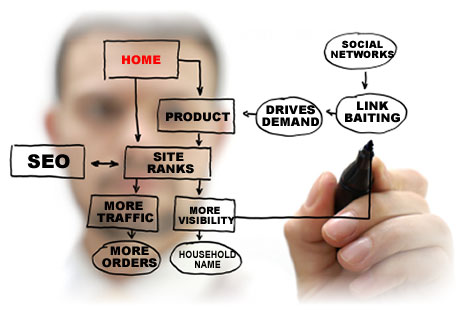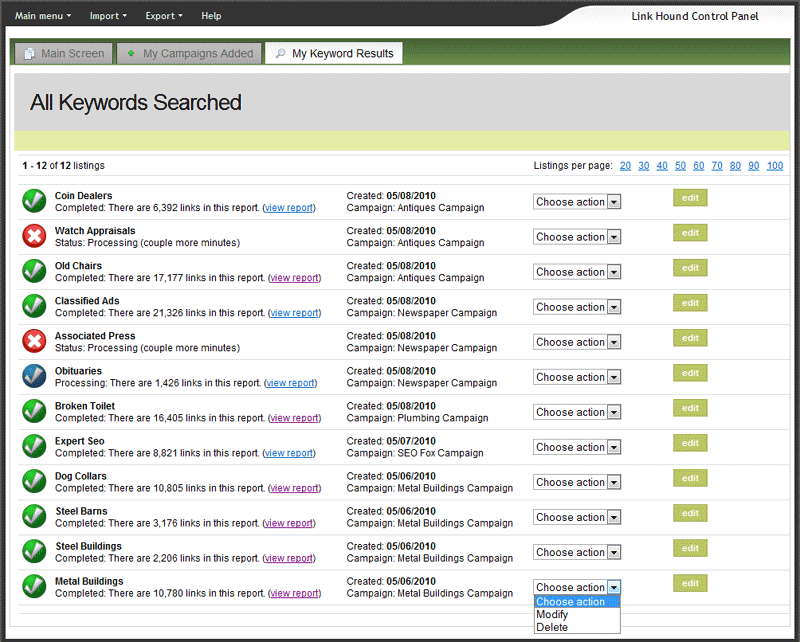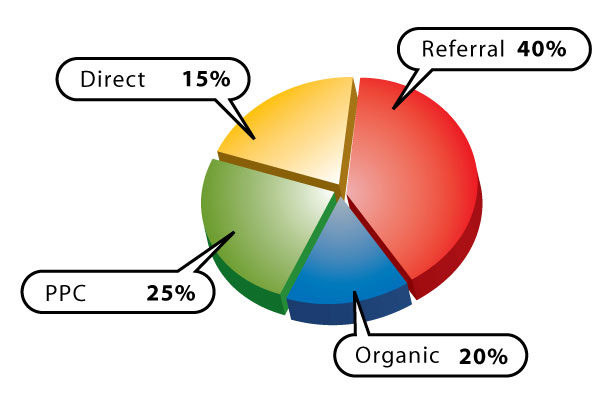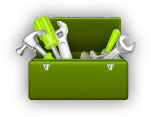Why my SEO campaign failed? Part 4: Common Link Building mistakes
 The Link Building is one of the most important aspects of SEO. Having quality links pointing to your site not only helps your Search Engine Rankings but also it can provide quality traffic to your website.
The Link Building is one of the most important aspects of SEO. Having quality links pointing to your site not only helps your Search Engine Rankings but also it can provide quality traffic to your website.
In the previous 3 articles we examined in detail the most Common On-page Optimization mistakes, several Common Web Development mistakes and some Common Link Structure mistakes that affect the SEO campaign. In this article we will discuss about the common mistakes that take place during Link Building.
1. Focus only on getting links from High PageRank pages
Backlinks from high PageRank pages can pass valuable PR juice to your website and affect your Search Engine Rankings. Nevertheless you should not get obsessed with this. Don’t forget that hyperlinks were created to drive traffic from one page to the other. Thus while developing your Link Building strategy you should not only focus on getting backlinks from high PageRank pages but also on getting links from a high traffic websites that can drive directly relevant traffic to your site.
2. Use incorrect anchor text in your backlinks
Backlinks don’t only flow PR juice but also they contain valuable information in their anchor text about the target pages. Have in mind that the anchor text of those links is a very important factor for search engine algorithms. Avoid at all costs placing links with irrelevant anchor text (such as “click here”) and always make sure that you incorporate the keywords that you optimized in the pointed page. You can find the targeted-high KeywordRank terms of a page by using the Keyword Analyzer tool. Usually you should place in the anchor text an attractive but not misleading title that will help you increase the click through rate and affect your rankings.
3. Place links in the wrong place
Search engines try to simulate the behavior of a real person, evaluate the pages/links and find the most relative pages for a particular search. Thus while evaluating the links of a page they try to find the ones that carry the most editorial weight and the ones that are more likely to be clicked by a user. This means that Search Engines take into account both the position and the context of the link. Hyperlinks placed in the footer or in other isolated places of the page often carry less weight than the ones that are found naturally in the text. Thus have in mind that the best place to add a link for SEO purposes is the one that will increase the click through rate.
4. Add backlinks in pages with lots of Outgoing links
According to Google Guidelines each page must have a reasonable number of links, generally less than 100. Pages with lots of outbound (outgoing) links can be considered as links farms and thus getting backlinks from them will not help your rankings. Additionally have in mind that the PageRank that flows through each link is related to the total number of outbound links that are contained in the page. Thus pages with too many OBLs (outbound links) flow a very small amount of PageRank through each link.
5. Don’t use/misuse Social Media
Social Media is a great way to communicate with others and share news, interesting articles, tools and services. Communicating your message to the correct target audience by using the social media can help you increase your website’s traffic. If your website/blog provides quality content, more people will learn about it and the chances of getting more backlinks increase.
Nevertheless don’t fall into the trap and believe that the backlinks from the social media can be considered quality links. Almost all the popular networking websites nofollow the external links and thus no PR juice flows through them.

6. Place backlinks only to your homepage
Normally your homepage is the page that has the most incoming links of your website. Since each page can effectively be optimized only for a small number of keywords, if you add links only to your homepage, your internal pages will probably not appear high in the results. Don’t forget that the internal pages can be equally important so make sure that they are also optimized and that they receive a large amount of quality backlinks.
7. Get links from irrelevant pages
The Links that come from pages that are irrelevant to your website’s theme look more like paid links. Search engines do their best to detect such links and exclude them from their evaluation. Have in mind that naturally obtained links tend to be placed in fewer places (not repeatedly in all pages), incorporated within the main text of the page and point to sources that are relevant to the content of the page.
8. Get lots of nofollowed backlinks
Nofollowed backlinks are links marked with the rel=”nofollow” attribute. Even though that those links can drive traffic to your website they pass no PR juice and the search engines don’t take them into account during their analysis. This means that nofollowed links that come from blogs, forums, directories, Wikipedia etc have absolutely no effect on your rankings. Thus while developing your Link Building strategy, make sure that only a small percentage of your backlinks are nofollowed.
9. Spend all of your time/money adding links of uncertain quality
Link Building is the most difficult part of SEO because the quality links that are needed can’t be acquired over a night. Quality links come from affiliations with other popular and influential websites and from the development of unique quality content. As a result many SEOs try to increase their links by spending all of their money on paid links, by using software that automates the process or by spending their time placing backlinks on low quality websites, directories, forums, blogs and article submission sites. Our suggestion is to avoid spending too much resources and effort on such methods since their results are far from the expected.

A great tool that can help you find and manage quality backlinks is Link Hound. Link Hound is web based application that allows you to create and manage your Link Building campaigns. The main target is to help you find the most relevant websites, retrieve Webmaster Contact information and help you evaluate potential affiliations. It provides customizable Search Filters and it allows you to export and download the Keyword Report. Note that this is not a tool for those who want to build automatically low quality backlinks, but for the SEOs that want to manage effectively their backlinks and make the correct decisions.

10. Use Black Hat – Spammy techniques
Black Hat or Spammy techniques that promise to improve your rankings in a short period of time can get you in a lot of trouble. SEO, unlike PPC and other forms of advertisement, is a long term investment and requires time and effort. Have in mind that search engines get more sophisticated over time and thus they are able to detect either algorithmically or manually the paid links. Our suggestion is to stay away from black hat techniques since the risk of getting banned is significantly high.
11. Link to bad neighborhoods
Exchanging reciprocal links could be a good way to start affiliations with other webmasters and exchange traffic. Nevertheless be extra careful when you place outgoing links. As mentioned above getting links from link farms will not help your rankings but it will certainly not hurt you, since as a webmaster, you can’t control the links that are placed in other sites. On the other hand you have full responsibility for the links that exist in your website. That’s why placing links from your site to bad neighborhoods can lead to bans.
12. Ignore the Referring traffic
There are lots of examples of high PageRank websites that even if they can provide quality backlinks, they receive very low traffic. As a result those backlinks can help you improve your domain’s authority but they will not provide you directly with significant amount of traffic. My suggestion is that your number one target should be to acquire links that will increase the referring traffic of your website.
Searching for high PageRank links that can’t provide you with traffic can’t be considered as a long term investment. Search Engines change frequently their algorithms and they evaluate differently the websites and the links. As a result such high PageRank-low traffic links can become useless on the future. Thus make sure that when you design your Link Building campaign you will focus on getting links from high traffic websites.

What is a quality link?
Remember that in link building both Quality and Quantity matters. So what you should consider as a quality link? Generally as quality links we consider the hyperlinks that have the following attributes:
- They come from High traffic & authority websites.
- They are placed in a High PageRank pages with relevant to your website content.
- They are placed in strategic part of the page.
- They have relevant anchor or alt text.
- They are placed in pages with few outbound (outgoing links).
That was the 4th part of the “Why my SEO campaign failed?” guide. Feel free to add you comments and propose your ideas about the subject. The best suggestions will be added in the list.
Images by 1webpromotion, webtreats, searchmarketme, shadphotos

 53 Comments
53 Comments


